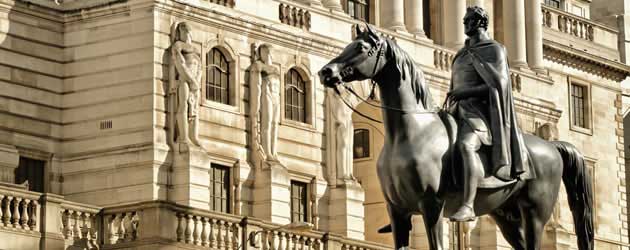
Sterling made gains last week after data continued to support the view that the UK’s economic recovery is on track.
On Monday the Pound began the session relatively unmoved against its peers due to the closure of the markets in France and the United States as a result of the Remembrance Day national holidays in those countries. As a result trading was subdued. However, as the day wore on the currency began to slide against the Euro and a number of other peers as investors settled into a wait and see approach ahead of the release of data on Tuesday and as Bank of England governor Mark Carney prepared to unveil his economic projections at his second inflation report in the middle of the week.
Tuesday saw the currency fall to a two-month low against the US Dollar and weaken close to a weekly low against the Euro as data showed that inflation in the UK slowed to its lowest level in more-than-a-year in October. Investor attention then focused on Wednesday’s BoE policy meeting where policy makers were expected to hold interest rates at a record low and maintain its stimulus programme.
In mid-week Sterling rebounded to make significant gains against all of its most traded peers after data showed that unemployment in the UK fell yet again and as the Bank of England declared that the nation’s economy recovery is finally underway.
The unemployment rate dropped to 7.6%, which bolstered investor speculation that the BOE could choose to raise interest rates and curb stimulus measures sooner than previously expected. Adding further strength to the currency was the fact that the Central Bank also increased its growth forecasts which added to optimism and demand for the currency.
Following the Bank’s report the Pound softened slightly against its peers due to the release of disappointing UK retail sales figures but reversed those losses as Thursday’s session wore on after Eurozone Gross domestic product and US balance of trade data came in worse than expected.
As the week drew to a close Sterling reversed its losses and climbed against the Euro, against the US Dollar it made its second weekly gain. The currency’s strength was boosted after Bank of England policy maker Martin Weale said that the UK economy will strengthen faster than officials have previously forecasted. The currency jumped to a two-week high against the Dollar as a result.
Looking ahead to the rest of this week we can expect investors to closely watch this Wednesday’s publication of the latest minutes from the US Federal Reserve and the Bank of England. The rest of the week is relatively devoid of important UK based data releases. Instead the Pound will be at the mercy of events in the US and elsewhere.
Current Pound Sterling (GBP) Exchange Rates:
The Pound Sterling/US Dollar Exchange Rate is currently in the region of: 1.6144
The Pound Sterling/Euro Exchange Rate is currently in the region of: 1.1943
The Pound Sterling/Australian Dollar Exchange Rate is currently in the region of: 1.7146
The Pound Sterling/New Zealand Dollar Exchange Rate is currently in the region of: 1.9241
The US Dollar/Pound Sterling Exchange Rate is currently in the region of: 0.6194
The Euro/Pound Sterling Exchange Rate is currently in the region of: 0.8369
The Australian Dollar/Pound Sterling Exchange Rate is currently in the region of: 0.5832
The New Zealand Dollar/Pound Sterling Exchange Rate is currently in the region of: 0.5196
(As of 09:35 am GMT)
Key events for the week ahead
Wednesday 20th November – Bank of England Minutes released
Thursday 21st November – Public sector Net borrowing
CBI Industrial Trends Orders

Comments are closed.